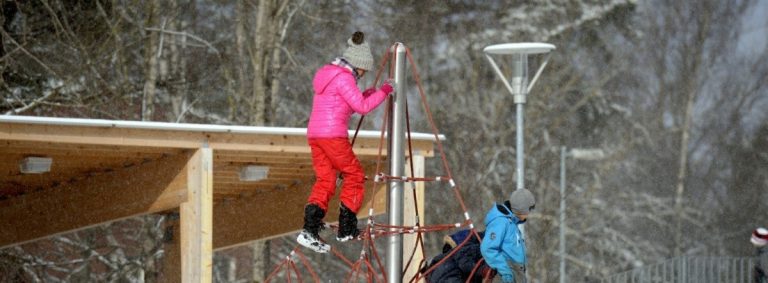
Finland has been crowned one of the happiest countries in which to live, for its beautiful landscapes, high wages, employee-focused work culture and democratic politics.
Finland is also renowned for its progressive attitude toward its education system. While the United States runs its education as a competitive business sector, Finland values nurturing children’s development.
Here are five reasons why Finland’s education system trumps the US’s…
No division between public and state sectors
Unlike in the US, all schools in Finland are funded by the government. This means the quality of education a child receives is not dependent on their parents’ income.
While the richest parents in the US can afford to pay hefty fees charged by the best schools in the country, all children in Finland are welcomed at high-quality schools where children’s needs are nurtured.

A pupil studies mathematics in a primary school classroom in Rovaniemi, Finland. Source: Shutterstock
This creates an equal society where all children are given equal opportunities from the beginning of their lives. The public and state division in the US has been criticized for disadvantaging less privileged families from the start, as it makes it harder for underprivileged students to catch up with their wealthy peers.
But in Finland, all children are entitled to a quality education. This means children will socialise with people from a diverse range of backgrounds when they are growing up, and that all children have equal opportunities to succeed in their adult life.
Student free time is highly valued
In Finland, students, teachers and parents alike understand free time is crucial to development. This means children are allowed 15 minutes of playtime after 45 minutes of teaching to help the develop social skills and learn how to cooperate.
Home time in Finland also means exactly that. While in the US, students have to wade through hours of homework each night, Finnish schools complete all the work necessary during school hours, leaving children free to play with their friends and family in the evenings.
This philosophy recognises childhood should be more than just memorizing the square-root of pi.
Teaching is valued as a respectable profession
As the oft-quoted line from School of Rock goes: “Those who can’t do, teach; those who can’t teach, teach Gym.” This is the mentality surrounding the teaching profession in the US.
Teachers are underpaid and overworked, and while your fancy sibling who’s made a career in banking may be swooned over at family parties, your career is likely to receive a polite “oh” and judging smile.
I think one factor that needs to be looked is the way countries like Finland recognise teaching as a highly prized profession, it's in the same category as doctors and lawyers. I was on my prac and overheard a parent say, school a great babysitting service.
— Ian Van Biezen (@MrIan_D) January 8, 2018
But in Finland, teachers are recognised as some of the most important professionals in society. To become a teacher, you must have at least a master’s degree as well as the equivalent of a residency programme in US medical schools.
While there is a production line mentality to creating new teachers in the US, Finland recognises the importance of the best minds in the country sharing their knowledge with today’s youth.
Research is king in decision-making
Thanks to depoliticised research centres, Finland makes decisions on education based on independent results. In the US, research is often funded to support political decisions meaning that studies only reflect part of the picture.
In Finland, though, if research shows the effectiveness of an educational programme or technique, it will soon be implemented in schools to benefit children.
Along with this comes a trusting policy where teachers are encouraged to experiment with teaching techniques to see what best suits their class.
While the US prescribes a set curriculum with narrow objectives, Finland offers teachers freedom to identify individualities within the class and teach accordingly. This means that students in Finland benefit from diverse learning techniques and creative thinking, unlike in the US.
Even preschool and university are free
In the US, you can pay between US$4,460 and US$13,158 for a year of preschool – and US$3,520 to US$33,480 for college tuition fees. These prices mean that less privileged students are priced out of a world-class education from the age of two until adulthood.
But the Finnish understand the best education starts in infancy and carries all the way through to higher education. This is why Finland provides free education from preschool level all the way through to university degrees – to every child in the country.
The result is a society of well-educated citizens who have all had equal opportunities to succeed in life. Rather than a person’s life being determined by the wealth of their parents, Finland provides every child with the tools they need to make the most out of their life.
Liked this? Then you’ll love…
Want cheap, good education abroad? Finland welcomes you
Ever thought about studying in Finland? Here’s why you should?







